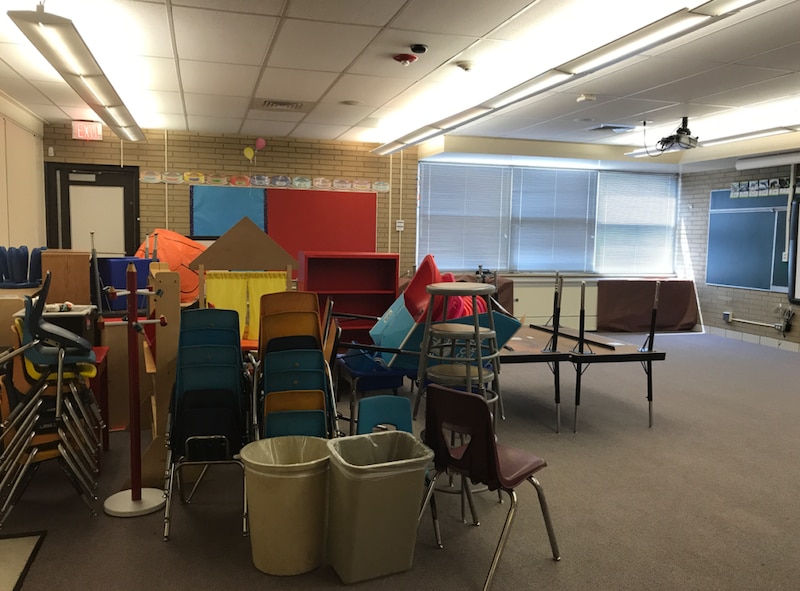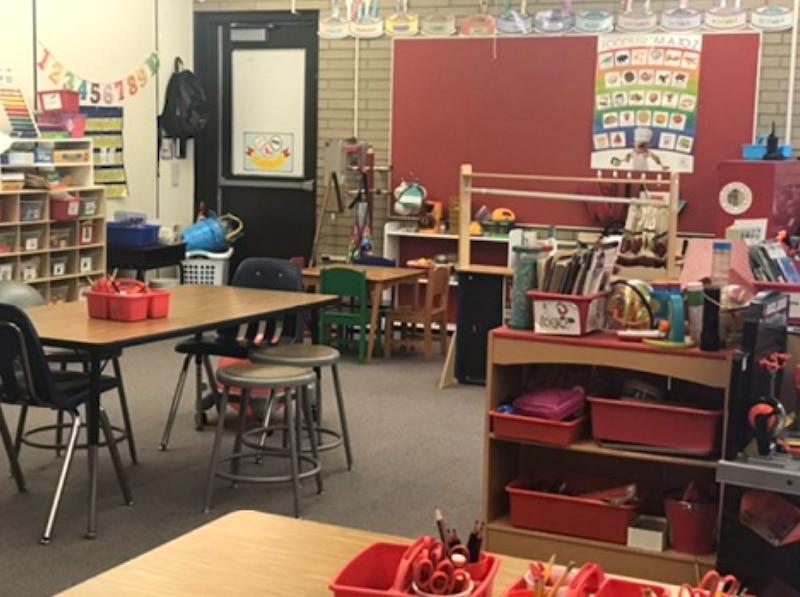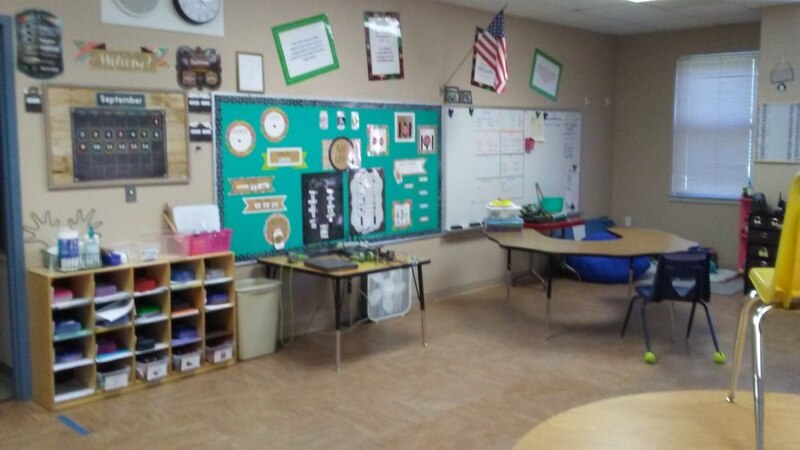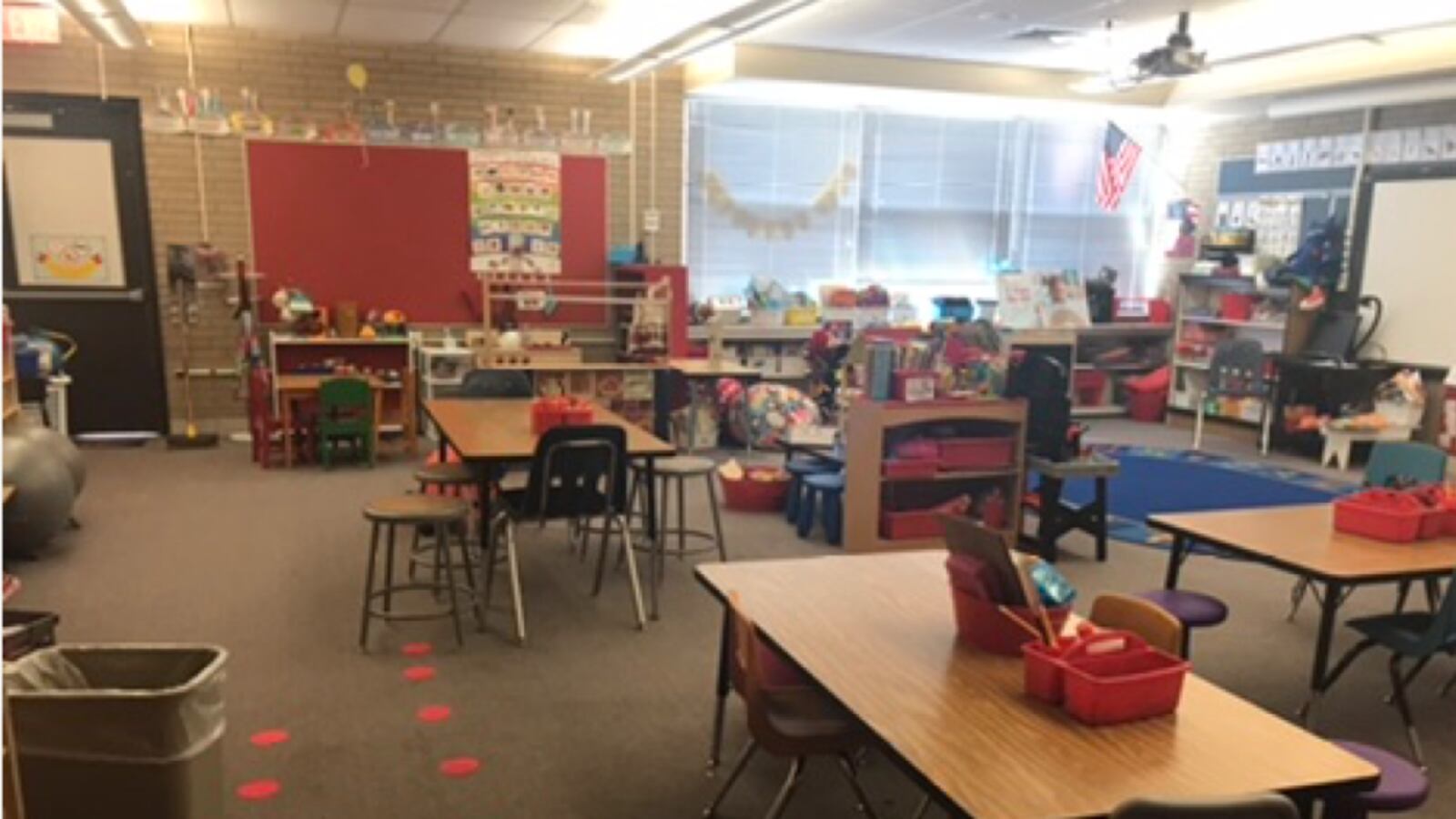The rugs and bean bag chairs, the workboxes full of hands-on learning games, the file folders that help her track student progress — all came out of special education teacher Laura Keathley’s own pocket.
Robyn Premo, a high school science teacher, buys styrofoam and cans, glass rods and balloons, patches of fur and s’mores ingredients — just about all the materials except beakers that her students need to do hands-on experiments.
Marcea Copeland-Rodden, a middle school social studies teacher, bought an air-conditioning unit for her classroom because it was so hot students were getting bloody noses.
And everyone buys loads and loads of pencils.
“I don’t think that not having a pencil is a reason a kid should not learn today,” Premo said.
There’s nothing new about teachers spending money on their classrooms, but as rising housing prices and stagnant wages put more pressure on working families and as academic expectations rise even in kindergarten, teachers have to dig deep to meet their students’ basic needs and outfit their school rooms.
A national survey by the U.S. Department of Education found that 94 percent of teachers spend their own money for their students, with the average teacher spending $479 in the 2015-16 school year, the most recent data available.
When the Colorado Education Association surveyed more than 2,000 members in 2017, they reported spending an average of $656 out of their own pocket on classroom supplies.
The usual caveat applies: These numbers are self-reported.
To better understand what this looks like in Colorado classrooms, Chalkbeat reached out to teachers around the state to ask how much they spent out of pocket, what they bought, and why.
The teachers who responded to Chalkbeat’s survey work in districts large and small, urban and rural, and spent anywhere from $75 to $2,000. Most respondents spent several hundred dollars, and the majority said they do not get a stipend for school supplies.
Their spending covers the most basic of classroom supplies — pens, pencils, glue sticks, crayons, paper, folders, notebooks — but also the things that make classrooms feel inviting, that make learning engaging, that help a kid get through the day. Teachers bought snacks and spare clothes, earbuds for students to listen to audio books as part of reading lessons, wiggly chairs and yoga balls for fidgety learners, classroom decorations, tissues and wipes, prizes for good work and good behavior, fish for the fish tank, storage bins and shelving and fabric for makeshift blinds.
Premo teaches chemistry and physics at Westminster High School. Her department gets a $3,000 supply budget for the high school’s 2,400 kids. She emphasizes that she thinks her school is doing everything it can, but if she didn’t reach into her own pocket, her students would mostly experience science in online simulations.
“That is not, in my opinion, sufficient for rigorous, authentic science instruction, so I make the personal contributions to give my kids those learning opportunities,” she said.
Premo spent $2,000 getting ready for the school year, the most of any teacher who responded to Chalkbeat’s survey. She said she’s able to contribute more than many teachers, so she does.
“There are some fantastic online simulations, but kids learn better when they get to put their hands on things,” she said.
Fur patches help demonstrate static electricity, and s’mores help illustrate principles of chemical reactions. All these materials add up, and many of them are consumed in the process of lab work.
If Premo didn’t spend her own money, “we would run out of pencils very quickly. And we would run out of lab materials, and they would not be able to do anything hands-on. And we would lose our ability to be creative. We would work very bare-bones. It would be a lot of listening, a lot of videos.”
Laura Henry teaches kindergarten in Aurora Public Schools. It’s her 29th year in the classroom, and as kindergarten has moved away from play and more toward academics, she’s spent more and more of her own money on curriculum supplies.
Her school provides $500 a semester to each grade level, which has to be shared among three teachers, and the money goes fast. Teachers also get $10 a month for copying, which she burns through quickly, so she bought her own printer just for school use.
Because most of the students come from low-income families, the school tries to keep the school supply list modest, closer to $25, but only about three-quarters of the students bring in supplies.

She spent about $500 of her own money getting ready for the school year, on everything from folders to hold student poems to snacks and wipes to materials for dramatic play, building toys, puppet theater, books, and more.
“Kindergarten is supply-heavy because we use construction paper and glue like there is no tomorrow,” she said.
Many of our survey respondents said they don’t use online fundraisers like Donors Choose because the only people who donate are friends and family, and teachers feel bad hitting them up over and over again. Henry encounters the same dilemma, but she did turn to it this year for $550 in science and engineering supplies: gears, a light table, animal X-rays, a microscope and more.
Another advantage of Donors Choose: The money she puts into it herself is tax deductible, unlike the rest of what she spends on her classroom.

Henry said she used to sometimes feel resentful about spending her own money, when her friends get reimbursed for their work expenses, but now she “rolls with it” as part of the teaching profession.
But she sees the lack of supplies as one more stumbling block for young teachers.
“I see these new teachers come in, and they’re so ready and eager to make a difference, and they don’t know how they get supplies or how they get copies,” she said. “I don’t know that our school board is even fully aware of how much we’re lacking at the classroom level. I don’t need 8,000 consultants to help me. I need my classroom funded.”
Keathley runs a multi-needs special education room with two paraprofessionals at Avery-Parsons Elementary in the Buena Vista district in the Arkansas Valley. She spent $485 getting the classroom ready this year. A lot of that money went to filing systems that help the teachers keep track of each student’s needs and progress. It also went to bulletin board supplies. These boards serve as the “411 wall” with everything kids need to know for the day, from what their classroom job is to what outside appointments they have.

Keathley and her team used their own money to outfit the “crash corner,” where students go when they need to decompress with fidget toys in a giant bean bag chair, and to make workboxes with activities that students can work on independently throughout the day.
Keathley said she hardly asks her parents for any school supplies.
“We know that a lot of times parents of kids with disabilities, we know their money goes other places and they spend so much on special things for their kids, we don’t want to ask them,” she said.
Without her own investment in the classroom, it would be a very different place.
“I could go with what the school provided me and stay within my budget, but my classroom would not be the place I would like it to be,” she said. “We wouldn’t have rugs. We wouldn’t have nearly the supplies to give snacks or do cooking in the classroom. Our desks would be much more utilitarian, and we wouldn’t have much on the walls.”
Copeland-Rodden teaches seventh grade social studies at Pueblo Academy of the Arts in southern Colorado.
She spent $500 this year, more than most, because she dropped $350 on the air conditioning unit. It might seem like an extravagance, but after years of buying more and more fans, for minimal relief, it felt like a necessity.
“It’s just really hot in the classroom,” she said. “We have kids get bloody noses, that’s how bad it is. By sixth and seventh period, everybody is done. They don’t do their work. They fall asleep. They get cranky and angry at each other. It makes it tough on everyone.”
She also bought materials for Civil War shadow puppets and other projects that will make history come alive, but most of her classroom spending is on basic supplies. She doesn’t feel like she can ask parents, most of whom are low-income, to pay for supplies when she only has their child for one period a day. Out of 130 students, one brought in a box of tissues at the start of the school year.
“I spend so much on pencils,” she said. “It’s not just once. I go through a big 50-pack of pencils every month. Every class there’s at least one kid who has lost a pencil. I’ve given up trying to get back the pencils.”
She used to ask kids for something in exchange for the pencil to prompt them to return it, but too many kids had nothing to give.
“One boy said, ‘Here’s a shoe,’ and I said, ‘I don’t want your shoe,’” she said. “I have kids walking from class to class with nothing.”
Teaching has been this way for a long time, and the teachers who talked to Chalkbeat don’t see it changing anytime soon.
“If we all collectively agreed we weren’t going to pay for school supplies, maybe eventually someone would do something,” Premo said. “But I don’t want to risk this year’s kids to make that point.”

